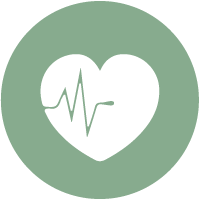Annual Physical Exams & Routine Check-ups

Contemporary Medicine Associates takes pride in providing comprehensive and patient-centered healthcare, including the essential service of annual physical exams. Our dedicated team of experienced medical professionals is committed to ensuring that you remain in the best possible health. During your annual physical exam, our physicians conduct a thorough assessment of your overall well-being, addressing any existing health concerns and identifying potential issues early on. These exams are designed to promote preventive care, monitor your vital health metrics, and establish a strong doctor-patient relationship. At Contemporary Medicine Associates, we believe that these regular check-ups are instrumental in helping you maintain a healthy and fulfilling life. Your well-being is our priority, and we are here to support you every step of the way.
What is a physical exam?
A physical exam, also known as a medical examination or clinical examination, is a systematic and thorough assessment of a person’s overall health and well-being by a qualified healthcare provider, such as a physician, nurse practitioner, or physician assistant. It involves the healthcare professional physically examining the patient’s body to evaluate various aspects of their health. During a physical exam, the healthcare provider may:
Take a medical history: The healthcare provider will ask the patient about their medical history, including any current or past illnesses, medical conditions, medications, and family medical history.
Perform a visual inspection: The healthcare provider will visually examine the patient’s general appearance, skin condition, posture, and overall demeanor.
Measure vital signs: Vital signs, including blood pressure, heart rate, respiratory rate, and body temperature, are often checked to assess the patient’s baseline health.
Auscultate: The provider may use a stethoscope to listen to the patient’s heart, lungs, and other internal organs to check for any abnormalities.
Palpate: This involves gently pressing and feeling different parts of the body, such as the abdomen, to detect tenderness, masses, or abnormalities.
Check reflexes: The healthcare provider may assess the patient’s reflexes by tapping on specific areas of the body with a small hammer.
Assess mobility and range of motion: Joint flexibility and mobility may be tested to check for any limitations or discomfort.
Perform specific tests: Depending on the patient’s age, gender, and medical history, additional tests like breast exams, testicular exams, Pap smears, or prostate exams may be conducted as part of a routine physical.
The specific components of a physical exam can vary depending on the patient’s age, gender, and individual health concerns. The purpose of a physical exam is to identify any existing health issues, monitor the patient’s general health status, and provide early detection of potential health problems. This helps in promoting preventive care and maintaining overall well-being.





